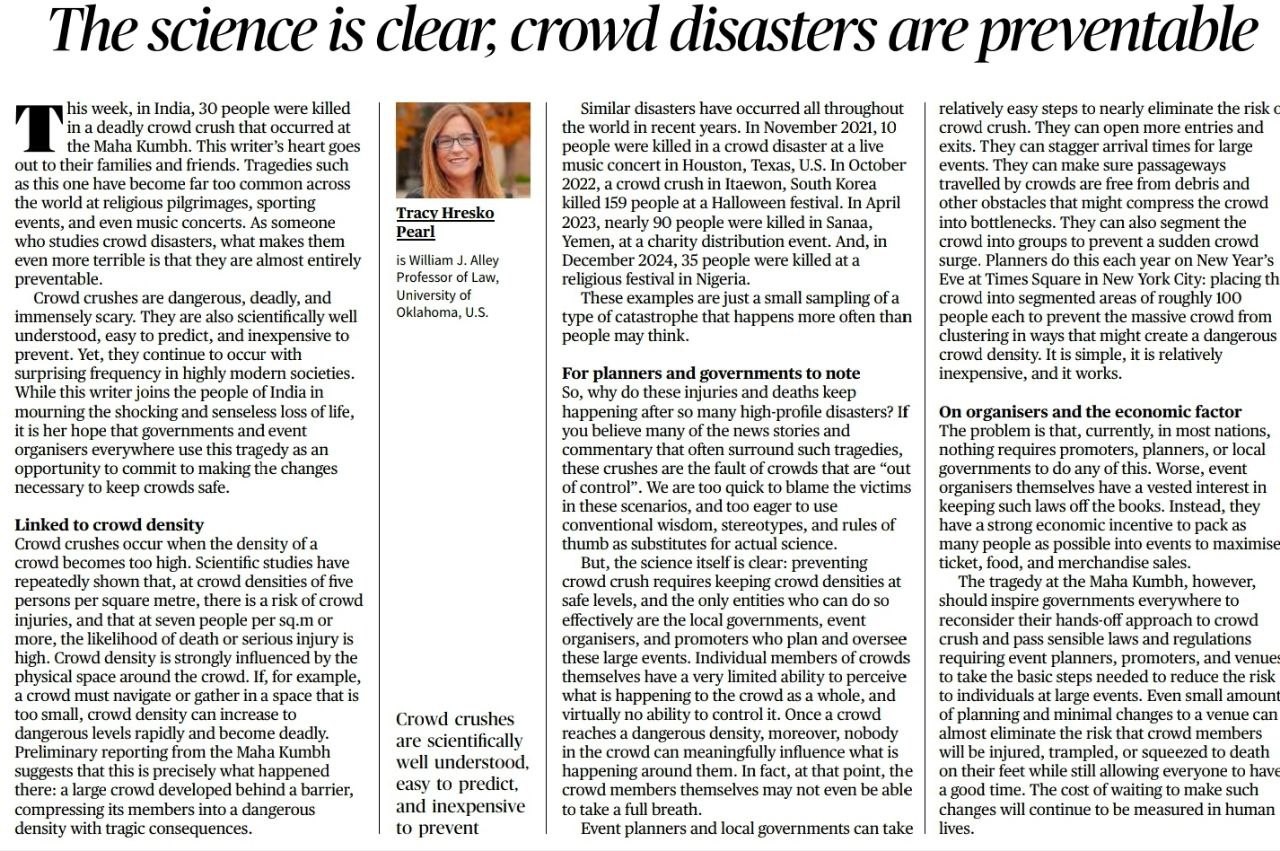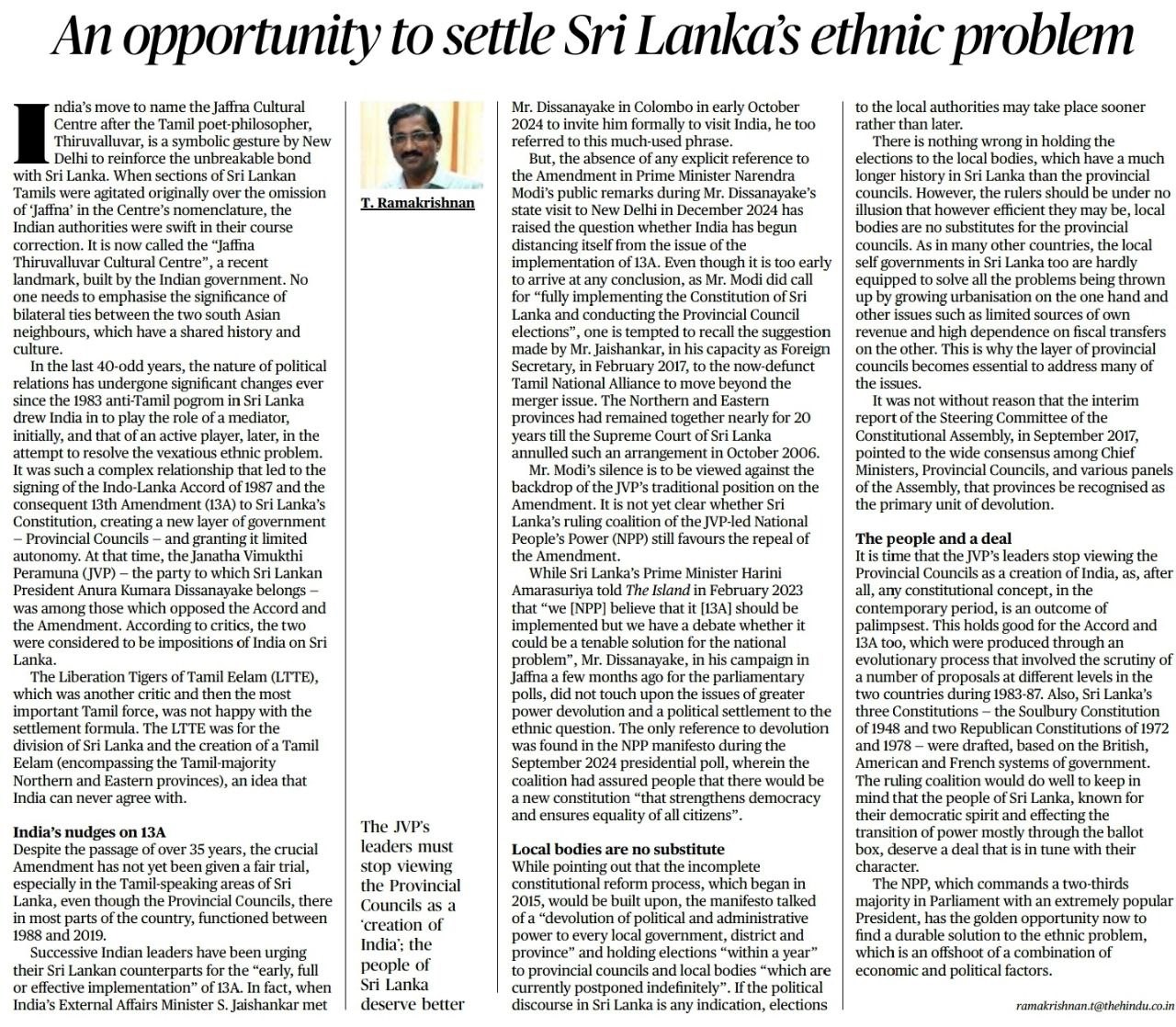1. Preventing Crowd Disasters: Scientific Approach and Policy Interventions
Introduction
Crowd disasters, particularly crowd crushes, have become frequent worldwide, occurring at religious gatherings, concerts, and festivals. These incidents result in significant loss of life, yet they are largely preventable through proper planning and crowd management. Scientific research has shown that maintaining safe crowd densities is key to preventing such tragedies.
Understanding Crowd Crushes
- Occur when crowd density exceeds a safe limit.
- At densities of five persons per square meter, risk of injury increases.
- At densities of seven persons per square meter, likelihood of serious injuries and fatalities rises sharply.
- Often triggered by physical barriers or restricted movement areas.
Examples of Recent Crowd Disasters
- Houston, USA (2021): 10 killed at a live music concert.
- Itaewon, South Korea (2022): 159 killed at a Halloween festival.
- Sanaa, Yemen (2023): Nearly 90 killed at a charity event.
- Nigeria (2024): 35 killed at a religious festival.
Role of Planners and Governments
- Crowd disasters are often blamed on unruly crowds, but scientific evidence suggests they result from poor planning.
- Authorities and event organizers have the primary responsibility for ensuring safe crowd densities.
- Once a crush begins, individual crowd members have no control over the situation.
Preventive Measures
- Increasing Entry and Exit Points: Reduces congestion and allows smoother movement.
- Staggering Arrival Times: Prevents sudden surges in density.
- Clearing Pathways: Ensures movement is not obstructed by barriers or debris.
- Crowd Segmentation: Breaking large crowds into smaller groups (e.g., New Year’s Eve at Times Square).
- Regulatory Reforms: Governments should enforce crowd safety laws, mandating scientific crowd management principles.
Economic Factor & Negligence
- Event organizers prioritize profits over safety, aiming to maximize ticket, food, and merchandise sales.
- Regulations are lacking in most countries, leading to recurring disasters.
- Governments must pass strict crowd safety regulations to ensure accountability.
Conclusion
Crowd crushes are scientifically understood and preventable. The onus lies on authorities, planners, and event organizers to implement safe crowd management practices. Governments must enforce regulations to minimize risks, as ignoring this issue leads to loss of lives and long-term economic consequences.
Bottom of FormMains Practice Question |
Q. Crowd disasters are often preventable, yet they continue to occur worldwide. Discuss the causes of crowd crushes and suggest policy measures to mitigate them. (250 words) |
2. Resolving Sri Lanka’s Ethnic Conflict: India’s Role and the 13th Amendment
Introduction
Sri Lanka’s ethnic tensions, particularly between the Sinhalese majority and the Tamil minority, have a long history. India’s diplomatic engagement, particularly through the Indo-Lanka Accord (1987) and the 13th Amendment (13A), aimed to address Tamil grievances by granting provincial autonomy. However, decades later, full implementation remains elusive, and India continues to push for its enforcement.
Historical Background of Ethnic Conflict
- Ethnic tensions escalated in 1983 with anti-Tamil riots, leading to demands for autonomy.
- The Liberation Tigers of Tamil Eelam (LTTE) emerged as the main separatist force, advocating for an independent Tamil Eelam.
- The Indo-Lanka Accord (1987) resulted in the 13th Amendment, establishing Provincial Councils for decentralization of power.
India’s Role in Sri Lanka’s Tamil Issue
- India has historically acted as a mediator, balancing diplomatic and strategic interests.
- Successive Indian governments have urged Sri Lanka to implement full devolution of powers under 13A.
- Recent developments, including the Jaffna Cultural Centre inauguration, signal renewed Indian engagement.
Challenges in Implementing 13A
- Political Resistance:
- Some Sinhala nationalist groups oppose Tamil autonomy, fearing separatism.
- Janatha Vimukthi Peramuna (JVP) and other political forces resisted the Indo-Lanka Accord.
- Judicial and Constitutional Hurdles:
- The Sri Lankan Supreme Court (2006) invalidated the merger of the Northern and Eastern provinces, weakening Tamil self-rule.
- Weak Political Will:
- Successive Sri Lankan leaders have hesitated to fully implement 13A due to electoral politics.
- Current President Ranil Wickremesinghe has spoken of elections for local bodies but not for provincial councils.
Importance of Provincial Councils
- Provincial councils provide regional autonomy, addressing Tamil grievances without full federalism.
- Mere local body elections are insufficient, as they do not grant legislative power to Tamil regions.
Way Forward
- Full Implementation of 13A: Ensuring provincial autonomy while maintaining Sri Lanka’s territorial integrity.
- Political Consensus: Building national agreement to address Tamil concerns democratically.
- India-Sri Lanka Collaboration: Strengthening bilateral ties to ensure sustainable peace in the Tamil-majority areas.
Conclusion
Sri Lanka’s ethnic conflict remains unresolved despite the Indo-Lanka Accord and the 13th Amendment. India’s diplomatic engagement remains crucial in ensuring full devolution of powers to the Provincial Councils, allowing for ethnic reconciliation and lasting peace in Sri Lanka.
Mains Practice Question |
Q. Discuss the significance of the 13th Amendment to Sri Lanka’s Constitution in resolving the Tamil ethnic issue. What role has India played in advocating for its implementation? (250 words) |



